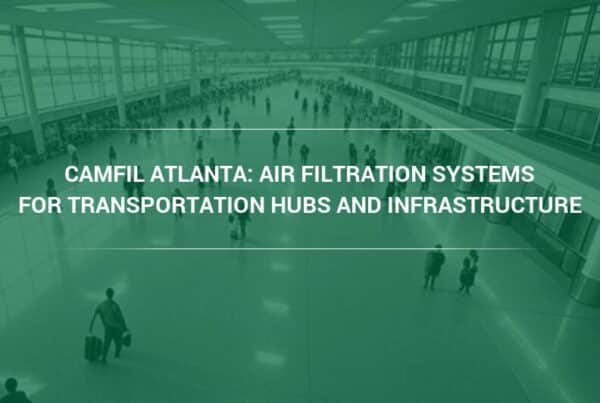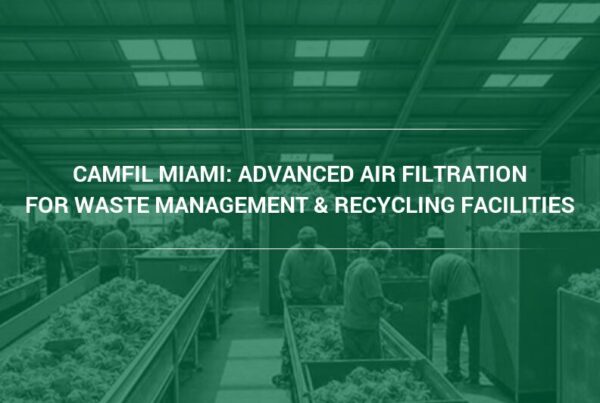Factors such as chemicals and poor ventilation can compromise indoor air quality and affect the health of employees says Camfil Air Filters
Camfil USA, a leading air filters company explains how the owners of commercial facilities that prize the health of their employees must understand the factors that can cause poor indoor air quality, so that they can implement effective air filtration strategies.
Most people understand the definition of air pollution and how it can affect health and well being, but few really understand the factors that can make indoor air quality even worse than the quality of air outdoors.
Part of that disconnect is that air pollution is an umbrella term that refers to particulates and contaminants, but does not really identify the specific airborne contaminants.
Identifying these contaminants is the first step in improving indoor air quality through an air filtration system.
Factors That Affect Indoor Air Quality
One of the ironies about air pollution is that indoor air pollution is often worse than pollution outdoors. That’s because enclosed areas act as a kind of incubation for contaminants, and in many instances actually create a more hospitable environment for pollutants such as microbes and viruses to flourish.
So with that in mind, the most common pollutants that affect indoor air quality are:
Chemicals Chemicals are often used in laboratories; paint stores and auto repair shops, and are a major source of toxic vapors.
Suspended particles Tiny particles that become airborne and do not move through the air due to lack of proper ventilation or air filtration.
Microbes Fungi and viruses that grow in indoor facilities where moisture, leaking and humidity create the perfect storm for growth.
Pets Commercial facilities in which pets roam free can become storing houses for animal-sourced allergens that can worsen breathing ailments such as asthma and bronchitis.
Pests Dust mites, mice and cockroaches can also cause allergens from their droppings that can compromise indoor air quality.
Humidity The humidity level in a commercial facility is often tied to proper ventilation, but if the humidity level is too low, the air will be too dry and can cause skin rashes and other ailments. However, high humidity is also not ideal as this creates moisture and can lead to the growth of mold and fungus.
Ventilation Well-designed facilities are built with ventilation that allows air to circulate in a way that minimizes the intake of bad air. Ventilation must also be paired with air filtration devices to assure the best indoor air quality.
People Although not as commonly understood, people who walk in and out of a facility are another major source of indoor pollution. This is especially true if those people are smokers and bring nicotine and other particles into a facility. People can also bring in allergens from their homes. People also shed skin, at a rate of millions of skin particles per hour, contributing to the dust in the environment and creating food for pests like dust mites.
Clean Air Solutions
The U.S. Environmental Protection Agency (EPA) recommends that commercial facility physical managers implement three methods to improve indoor air quality: Identifying pollution sources, improving ventilation and implementing air filtration.
Identifying pollution sources is vital in facilities such as paint stores and auto repair shops where pollution sources can be enclosed and sealed off to prevent them from becoming airborne.
Improving ventilation is another aspect of implementing clean air solutions in a commercial facility. Improvement could involve increasing the number of openings at a facility that bring in fresh air, and controlling how much outside air enters the facility.
The final method is the most important, because without air filtration such as the proper air filters in HVAC systems or air cleaners to filter contaminants, pollution will continue to accumulate and affect the health of those who frequent these facilities.
Camfil Provides Effective Air Filtration
For 50 years, Camfil Air Filters has offered air filtration devices for every commercial industry, including hospitals, automotive paint shops, labs and libraries. Camfil’s guiding principle is that clean air should be a human right, and the company strives to fulfill that principle by offering the most affordable and energy-efficient air filters on the market.
And by also providing on-site assessments, Camfil can help determine the indoor air quality of any facility, and then design an air filtration strategy to meet a facility’s unique needs.



